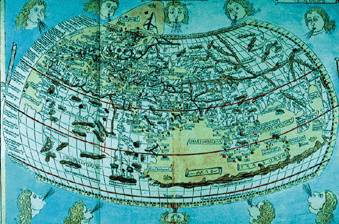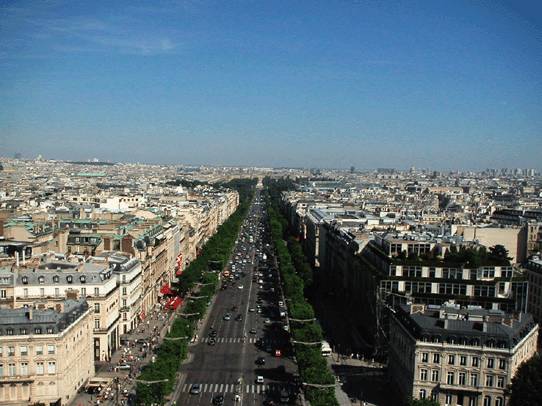Section 2.3. Maps and Charts
2.3. Maps and ChartsFrom the lighthouse to the chronometer, our inventors kept at it until we could compute distance, direction, and position from anywhere in the world. Of course, most of these wayfinding devices would have been relatively useless without the remarkable invention we know as the map. Though the oldest existing maps are preserved on Babylonian clay tablets from 2500 B.C., shown in Figure 2-2, the first maps were undoubtedly created thousands of years before in early hunter-gatherer societies, where crude diagrams sketched in the dirt were used to show paths and destinations within a local area. This ability to transform "cognitive maps" gained from personal experience into symbolic visual representations provided humans with a powerful cooperative advantage. Maps enabled us to share wayfinding experiences and geographic knowledge, thereby extending our communal ability to explore wider and wider regions without becoming afraid or getting lost. We could tell each other where to find food and we could warn of dangers to avoid. Figure 2-2. Clay tablet map from Ga-Sur (2500 B.C.) on left; redrawing with interpretation on right (images from http://www.henry-davis.com/MAPS/AncientWebPages/100D.html) For many centuries, maps and mapmakers played a powerful role in defining the elements and edges of the known world. As Alfred Korzybksi, the father of general semantics, famously remarked: "the map is not the territory." No map can depict every physical feature of even the smallest area. All maps are estimations, generalizations, and interpretations. Maps are not so much about attention to detail as the selection of detail (Figure 2-3). Mapmakers choose which landmarks and paths to show and which to hide, and they decide where to draw the boundaries. On some maps, like the one in Figure 2-2, those boundaries marked the limits of one's territory: to venture outside the lines was to enter a no man's land between tribes. On other maps, those boundaries marked the edge of the world, literally (Figure 2-4). For much of antiquity people believed in a flat earth and feared falling off the edge. Maps reflect and shape the beliefs of a community or civilization. Beyond this place, there be dragons! Figure 2-3. The London Tube Map sacrifices reality for simplicity, presenting memorable paths, edges, districts, nodes, and landmarks (image from http://www.tfl.gov.uk/tube/maps) Figure 2-4. Ptolemy's map of the world, circa 150 A.D. (from The Image of the World [Whitfield, 1994]; available at http://academic.emporia.edu/aberjame/map/h_map/h_map.htm) The refutation of the flat earth theory clearly had major political, religious, cultural, and commercial implications. Proposed by Pythagoras in 500 B.C. and proved by Aristotle in 350 B.C., the round earth theory set the stage for global exploration, international trade, and modern mapmaking. Early maps of the known world were hand drawn. Consequently, they were very rare and very expensive. The invention of the printing press made maps more widely available, thereby sparking the Age of Exploration in the 15th and 16th centuries. Extensive travel and careful observation led to more detailed maps and navigation charts with coast lines, islands, rivers, and safe harbors. The military and economic value of these maps did not go unnoticed: many were designated as classified national or commercial secrets. In 1569, Gerardus Mercator of Belgium published a map of the world based on a cylindrical projection that allowed for easier and more accurate navigation of a round world via a flat map. To achieve this goal, the Mercator Projection distorted the true layout of the Earth, exaggerating the size of areas far from the equator. Greenland looked equivalent in size to Africa, which is actually 13 times bigger. Europe appeared in the center and larger than life, a feature that contributed to the map's early popularity. But most importantly, the projection worked. It's still widely used today, though it's accused of perpetuating the perceived inferiority of the "Third World." Despite the prevalence of national mapping programs, much of the Earth was uncharted until the widespread use of aerial photography following World War II. Advances in the use of radio signal-based navigation and positioning systems such as radar and Loran in the 1930s and 1940s dramatically increased the efficiency and precision of these mapping efforts. In the 1970s, we began pouring all this spatial data into geographic information systems (GIS). Traditionally, the map served as both database and display. GIS established the separation of the data and presentation layers, allowing for many of today's mobile, network-enabled navigation devices. Of course, today we're more likely to use our maps and GPS systems to navigate the streets of an unfamiliar city than the Straits of Gibraltar. Our everyday experiences with wayfinding are based largely in surroundings of our own making. This brings us, quite naturally, to the built environment. |
EAN: 2147483647
Pages: 87